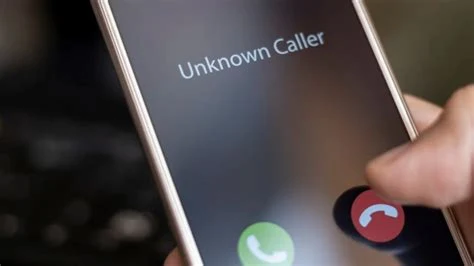Types of Phishing Attacks: How to Protect Yourself from Cyber Threats
Understanding the Types of Phishing Attacks: Protect Yourself from Cyber Threats
Introduction: In today’s digital age, phishing attacks have become one of the most common and dangerous cyber threats. These deceptive tactics are designed to trick individuals and organizations into revealing sensitive information, such as passwords, financial details, or personal data. Understanding the different types of phishing attacks is crucial for protecting yourself and your organization from these malicious schemes.
1. Email Phishing: The Classic Trap
Email phishing is the most widespread type of phishing attack. Cybercriminals send fraudulent emails that appear to be from legitimate sources, such as banks, online services, or trusted companies. These emails often contain urgent messages, like "Your account has been compromised" or "Verify your account information," to provoke immediate action.
- How it works: The email usually contains a link to a fake website that closely resembles the legitimate one. Once you enter your credentials or other personal information, the attackers capture it.
- Example: A fake email from "PayPal" asking you to log in to resolve an account issue.
Protection Tip: Always double-check the sender's email address and never click on links or download attachments from unsolicited emails.
2. Spear Phishing: A Targeted Attack
Spear phishing is a more sophisticated form of phishing, where attackers tailor their attacks to specific individuals or organizations. By researching their targets, they craft personalized messages that appear highly credible, making it easier to deceive even the most vigilant individuals.
- How it works: The attacker may use information like your job title, company name, or personal interests to create a convincing email that appears to come from a trusted source.
- Example: An email from your "CEO" requesting urgent action on a sensitive project.
Protection Tip: Be cautious of any unexpected emails, especially those requesting confidential information. Verify the sender's identity through a different communication channel before responding.
3. Whaling: Going After the Big Fish
Whaling, or CEO fraud, is a type of spear phishing that targets high-profile individuals such as executives or decision-makers within an organization. These attacks are highly dangerous as they can lead to significant financial losses or data breaches.
- How it works: Attackers impersonate a senior executive, sending an urgent request to another executive or financial officer to transfer funds or share sensitive information.
- Example: A fake email from the "CFO" requesting an immediate wire transfer to a vendor.
Protection Tip: Implement strict verification procedures for financial transactions and educate executives about the risks of whaling.
4. Vishing: Voice Phishing
Vishing, or voice phishing, involves phone calls where attackers pose as legitimate entities to extract personal or financial information. This method exploits the trust people place in phone communications.
- How it works: The caller may pretend to be from your bank, tech support, or government agency, asking you to provide or verify sensitive information over the phone.
- Example: A scammer posing as "tech support" claiming your computer is infected and requesting remote access.
Protection Tip: Never provide personal information or access to your computer over the phone. Hang up and contact the organization directly using a verified number.
5. Smishing: Phishing via SMS
Smishing is phishing via SMS text messages. Attackers send messages that appear to be from reputable companies, asking you to click on a link or call a number to resolve an issue or claim a prize.
- How it works: The message may include a link to a malicious website or a phone number where the attacker will try to gather your information.
- Example: A text from your "bank" stating that your account has been locked and needs verification.
Protection Tip: Be wary of unsolicited messages asking for personal information. Do not click on links or call numbers provided in suspicious texts.
6. Clone Phishing: The Deceptive Duplicate
Clone phishing involves the creation of a nearly identical copy of a legitimate email or message you’ve received in the past. The cloned message will typically include a malicious attachment or link that the attacker wants you to click on.
- How it works: The attacker replaces the original attachment or link with a harmful one and sends the email from an address that closely resembles the legitimate one.
- Example: A fake email from "your colleague" with a familiar subject line, asking you to review an updated document.
Protection Tip: Always verify the authenticity of unexpected attachments or links, even if the message appears familiar.
Conclusion: Stay Vigilant Against Phishing Attacks
Phishing attacks are constantly evolving, and cybercriminals are becoming more creative in their methods. By understanding the different types of phishing attacks, you can better protect yourself and your organization from these threats. Remember, when it comes to cybersecurity, vigilance and education are your best defenses.









No comments